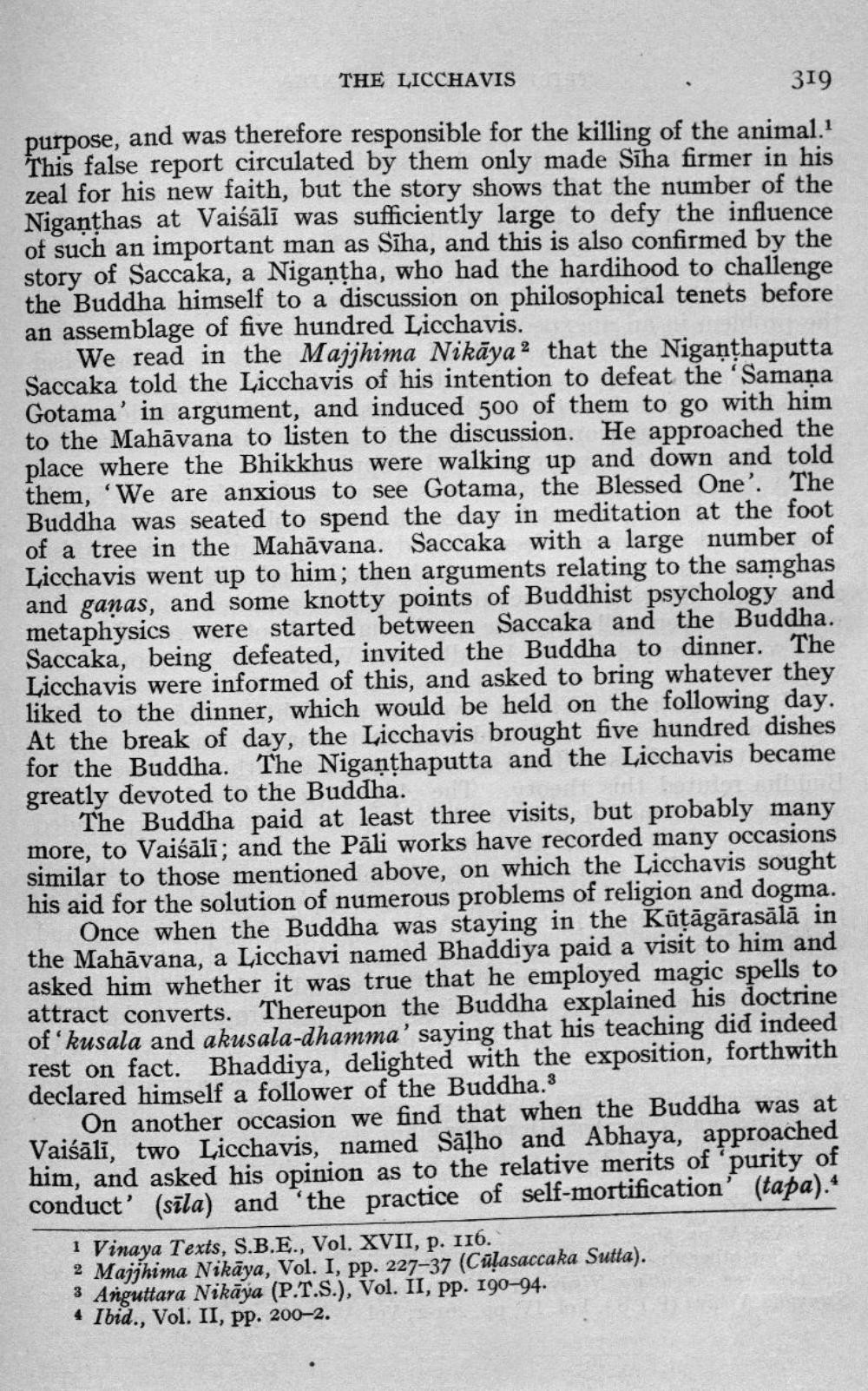________________
THE LICCHAVIS
319
purpose, and was therefore responsible for the killing of the animal.1 This false report circulated by them only made Siha firmer in his zeal for his new faith, but the story shows that the number of the Niganthas at Vaiśāli was sufficiently large to defy the influence of such an important man as Siha, and this is also confirmed by the story of Saccaka, a Nigantha, who had the hardihood to challenge the Buddha himself to a discussion on philosophical tenets before an assemblage of five hundred Licchavis.
We read in the Majjhima Nikaya that the Niganthaputta Saccaka told the Licchavis of his intention to defeat the 'Samana Gotama' in argument, and induced 500 of them to go with him to the Mahāvana to listen to the discussion. He approached the place where the Bhikkhus were walking up and down and told them, 'We are anxious to see Gotama, the Blessed One'. The Buddha was seated to spend the day in meditation at the foot of a tree in the Mahāvana. Saccaka with a large number of Licchavis went up to him; then arguments relating to the samghas and ganas, and some knotty points of Buddhist psychology and metaphysics were started between Saccaka and the Buddha. Saccaka, being defeated, invited the Buddha to dinner. The Licchavis were informed of this, and asked to bring whatever they liked to the dinner, which would be held on the following day. At the break of day, the Licchavis brought five hundred dishes for the Buddha. The Niganthaputta and the Licchavis became greatly devoted to the Buddha.
und
The Buddha paid at least three visits, but probably many more, to Vaiśāli; and the Pāli works have recorded many occasions similar to those mentioned above, on which the Licchavis sought his aid for the solution of numerous problems of religion and dogma. Once when the Buddha was staying in the Kūṭāgārasālā in the Mahāvana, a Licchavi named Bhaddiya paid a visit to him and asked him whether it was true that he employed magic spells to attract converts. Thereupon the Buddha explained his doctrine of 'kusala and akusala-dhamma' saying that his teaching did indeed rest on fact. Bhaddiya, delighted with the exposition, forthwith declared himself a follower of the Buddha.3
On another occasion we find that when the Buddha was at Vaiśāli, two Licchavis, named Salho and Abhaya, approached him, and asked his opinion as to the relative merits of purity of conduct' (sila) and the practice of self-mortification' (tapa).*
1 Vinaya Texts, S.B.E., Vol. XVII, p. 116.
2 Majjhima Nikaya, Vol. I, pp. 227-37 (Culasaccaka Sutta).
3 Anguttara Nikaya (P.T.S.), Vol. II, pp. 190-94. 4 Ibid., Vol. II, pp. 200-2.




